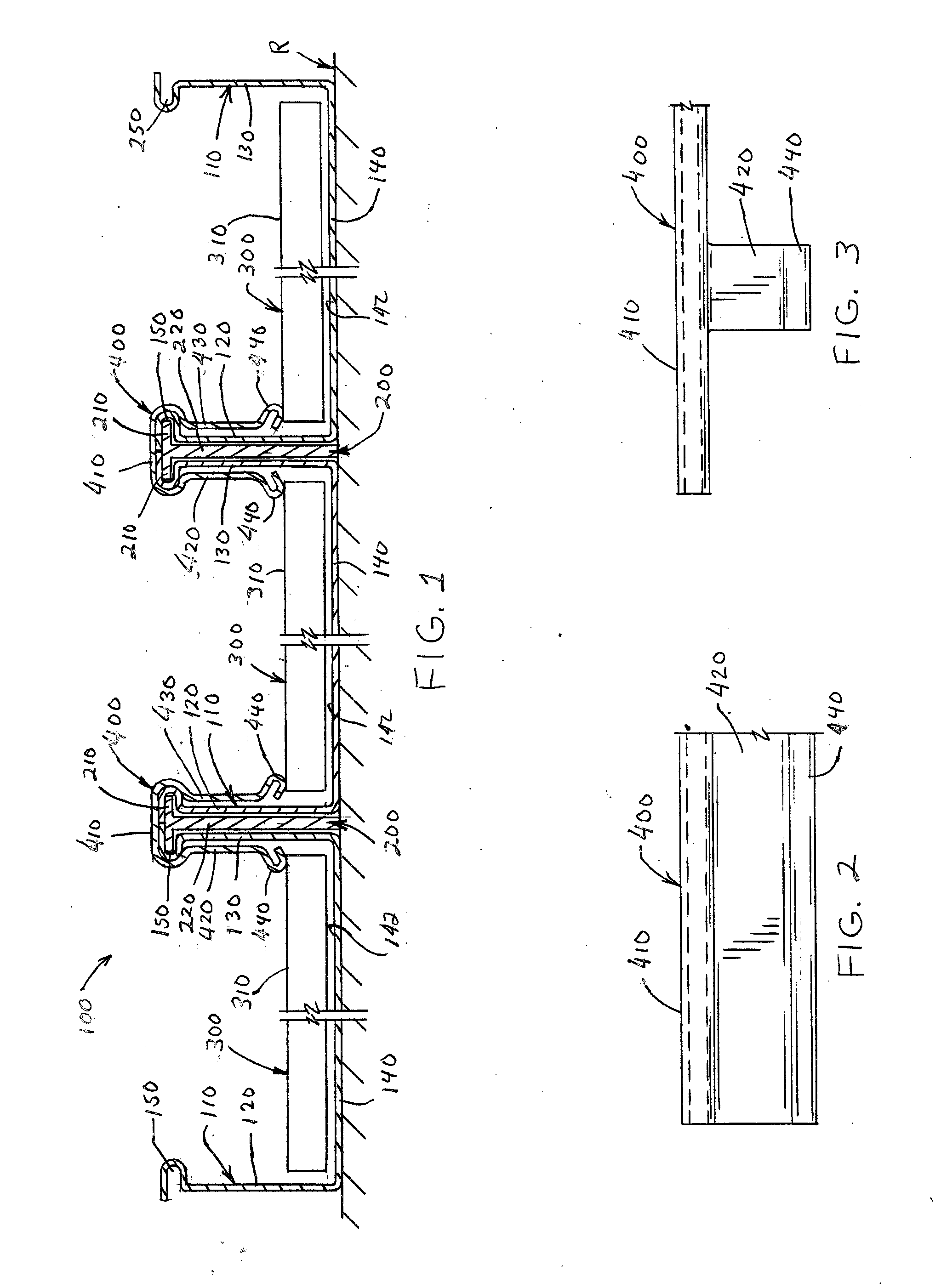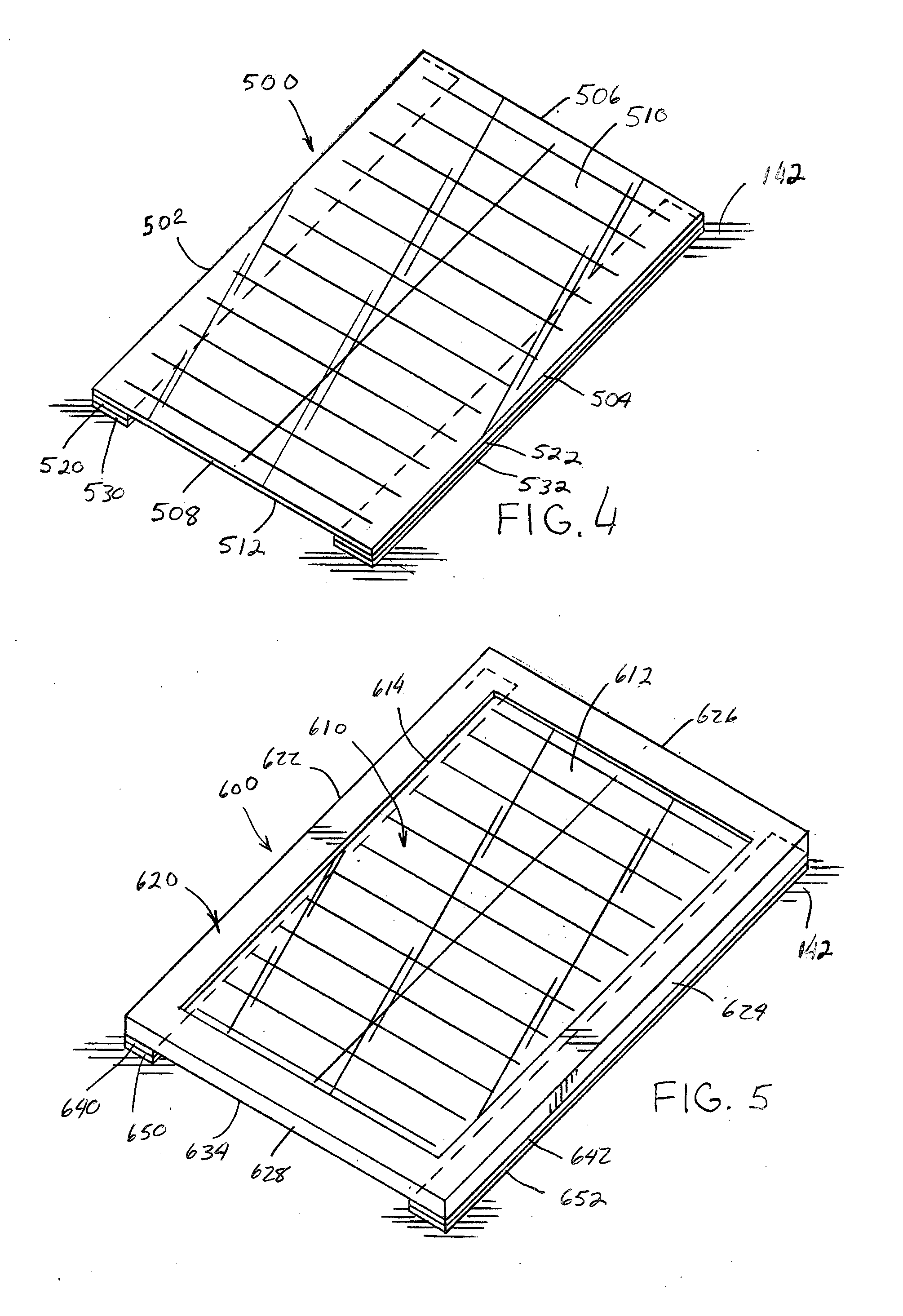Solar roofing system
a solar panel and roof technology, applied in the field of solar panels, can solve the problems of compromising the water tightness of the roof system, requiring structural upgrades to the building, and requiring the installation of solar panels with solar panels, etc., and achieve the effect of simple installation and cost-effectiveness
- Summary
- Abstract
- Description
- Claims
- Application Information
AI Technical Summary
Benefits of technology
Problems solved by technology
Method used
Image
Examples
Embodiment Construction
[0036]Referring now to the drawings wherein the showings are for the purpose of illustrating non-limiting embodiments of the invention only and not for the purpose of limiting same, FIG. 1 illustrates a roof panel system 100 that is formed of a plurality of roof panels 110. The roof panels are generally formed of a metal material; however, this is not required. The roof panels include two side flanges 120, 130 and a base section 140 connected therebetween. The base section and side flanges form a generally U-shaped cross-sectional profile for each of the roof panels; however, other profiles can be formed. As can be appreciated, the configuration of the roof panel, side flanges of the roof panel, and base section of the roof panels in non-limiting. As also can be appreciated, the material used to form the roof panel is non-limiting. The side flanges 120, 130 generally have a shorter length than the base portion; however, this is not required.
[0037]An anchoring clip 200 is illustrated...
PUM
| Property | Measurement | Unit |
|---|---|---|
| reflectivity | aaaaa | aaaaa |
| reflectivity | aaaaa | aaaaa |
| reflectivity | aaaaa | aaaaa |
Abstract
Description
Claims
Application Information
 Login to View More
Login to View More - R&D
- Intellectual Property
- Life Sciences
- Materials
- Tech Scout
- Unparalleled Data Quality
- Higher Quality Content
- 60% Fewer Hallucinations
Browse by: Latest US Patents, China's latest patents, Technical Efficacy Thesaurus, Application Domain, Technology Topic, Popular Technical Reports.
© 2025 PatSnap. All rights reserved.Legal|Privacy policy|Modern Slavery Act Transparency Statement|Sitemap|About US| Contact US: help@patsnap.com



